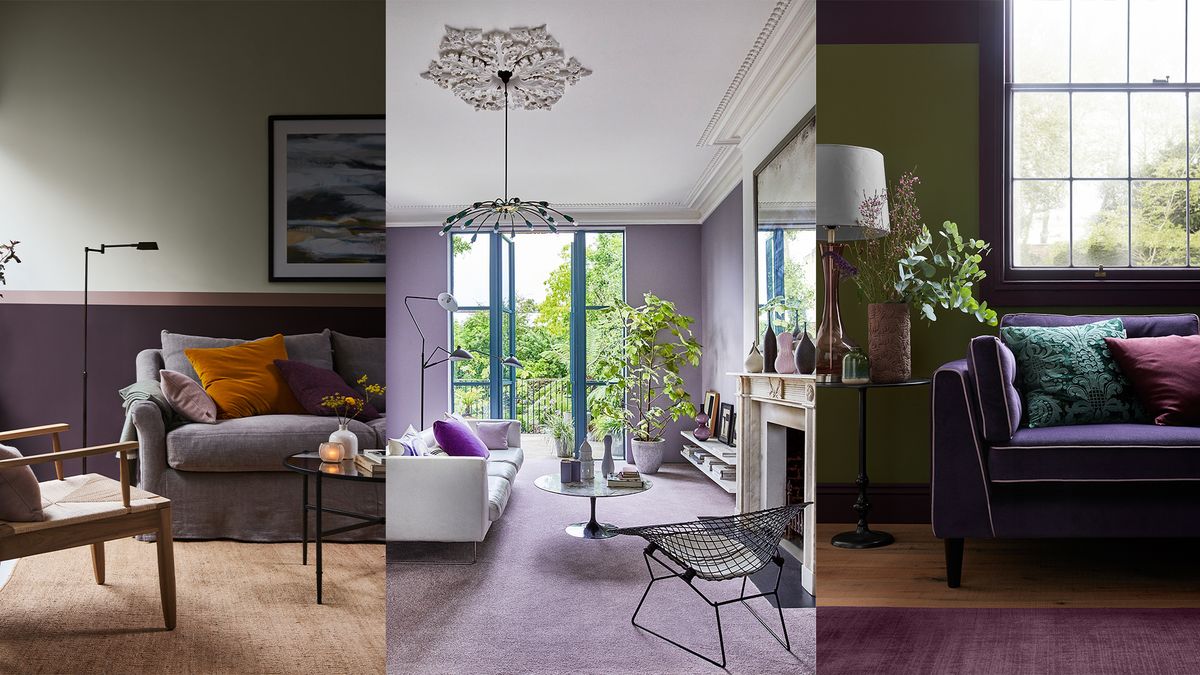DOES A SMALL room decorated like a monk’s cell—white walls, sparse furnishings—really seem larger than it would if adorned more luxuriously? No, say design experts. “Fabric, textures—so often people feel that if they put all this in, it’s going to make [a small room] feel claustrophobic,” said London interior designer Nicole Salvesen, of Salvesen Graham. “It actually has the opposite effect. You’re making [the room] feel more considered, which gives it a grandeur, small or not.” Here, designers debunk this and four other truisms of designing a small room to disguise its size.
An Athens, Ga., sitting room defies the paint-everything-white dictate regarding diminutive rooms. Interior designer Monica Stewart lavished Benjamin Moore’s Midsummer Night on walls and ceiling.
Photo:
Kristin Karch
Myth: White (or at least, light) paint is a must
Truth: A rich color on walls and ceiling fools the eye. You won’t feel closed in, said interior designer Sindhu Peruri, of Los Altos, Calif., because when darker paint is used to dissolve a sense of defined geometry, powder rooms and closet-sized bedrooms will appear larger. Playing down architectural details helps too. Hadley Wiggins, a designer in Peconic, N.Y., said she plays with the perception of a room’s size by painting window sashes and trim the same color as the walls, “allowing the eye to travel continuously instead of stopping on some jarring focal point or moment of contrast.”
Fort Worth, Texas, interior designer Tori Rubinson ignored traditional notions of room-to-art scale in the entry of her home.
Photo:
David Tsay/OTTO
Myth: Art shouldn’t dwarf a room
Truth: Use oversize art to fake a view. Even the laws of proportionality can be broken when maximizing petite spaces, said Brandon Schubert, an interior designer in London. “Treat art like a window,” he advised. And while you’re at it, look for paintings with vanishing points. “A lot of contemporary art feels very flat, but more-traditional art has perspective,” he said. He often hangs landscapes to add visual depth to even the tiniest of London loos. You can achieve this effect with either a single substantial piece or a gallery installation, said Ms. Salvesen. As long as the result “looks and feels generous,” she said, the space will, too.
In a little nook in a Seattle bedroom, local designer Heidi Caillier enlisted curves, which add a sense of movement and are easier to walk around than sharp corners.
Photo:
Haris Kenjar
Myth: Choose right-angled furniture so as not to waste space
Truth: Curved furniture adds movement and majesty. A trim floor plan often brings out a tendency to tuck in squared-off elements in a tight Jenga-like fashion to “save” square footage. But interior designer Juliana Vasconcellos, based in Rio de Janeiro, proposed that homeowners choose furniture that swooshes. “Normally the rule is to run from the curved sofa, but it gives a sensation of movement, and the idea of a bigger room,” she said. A rounded coffee or dining table has the same effect. At the least, said Seattle interior designer Heidi Caillier, consider seating with scroll arms or a gently curved back, details which will smooth out choppiness. “You can still have curviness on a sofa without it being fat,” she said.
‘This pattern gives a sense of depth superior to, say, blank white walls,’ said designer Thomas Jayne of his New Orleans bedroom’s wallpaper.
Photo:
Paul Costello/OTTO
Myth: Patterns will make a little space feel busy and coffin-like.
Truth: A figured wallpaper creates depth. Like dark paint, prints obscure corners, “almost creating a trompe l’oeil effect,” said Mr. Schubert. Opt for midsize to large-scale motifs. Minute prints, while quaint and cozy, can magnify a room’s tininess. For the less daring, even the subtle cross-hatching of grass cloth will add depth to shallow spaces. Laying down a striped carpet can have a similar result. “It stretches the floor,” said Mr. Schubert. He suggests wall-to-wall carpet, not rugs, which will leave bitty, busy borders.
Luxurious layers, like those in this petite bedroom by Annette Nordstrøm in Vestby, Norway, make an occupant feel cosseted and small, and the room feel larger.
Photo:
living4media / Nordstrom, Annette
Myth: Slick, modern finishes and lots of breathing room help a diminutive space feel less confining
Truth: The cosseting effect of soft furnishings and layered textures makes you feel small—and the room feel large. Ms. Caillier said she aims to create “a jewel box” and advised against “lots of clean lines.” Instead, she suggests plush window treatments, furniture with handworked elements and layers of nubbly textiles. “Each piece on its own should sing,” she said, explaining that when everything from a cushion to a side table is “cozy and considered,” the room takes on an enveloping warmth that suggests a larger scale. Window drapes can play double duty in low-ceilinged digs. Ms. Caillier suggests hanging them as far up as possible to lengthen the wall.
SHARE YOUR THOUGHTS
What tricks have you found to make a small room seem more spacious? Join the conversation below.
Copyright ©2022 Dow Jones & Company, Inc. All Rights Reserved. 87990cbe856818d5eddac44c7b1cdeb8
Appeared in the February 12, 2022, print edition as ‘Can I Make a Wee Room Feel Spacious?.’


